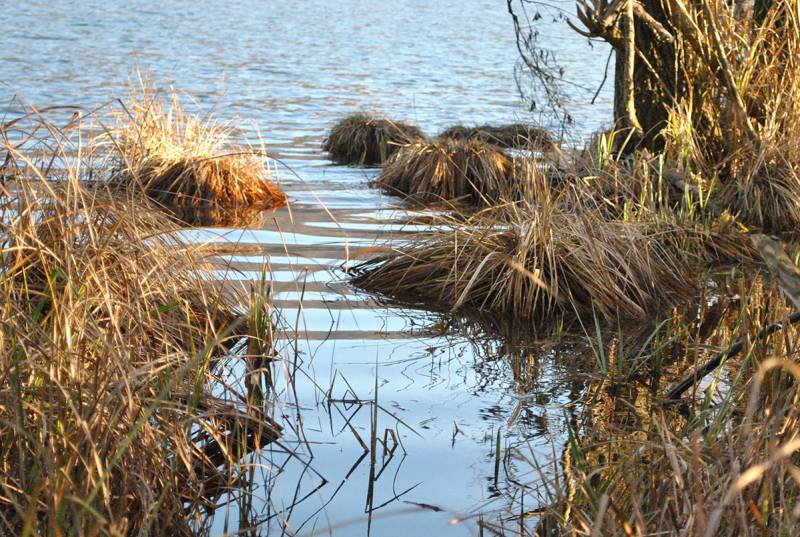Table of Contents
Filtration of Surface Water
Surface waters, in the form of rivers, streams, lakes and wetlands, are inextricably linked with human activities. Throughout human history, such waters have been used to carry away our pollutants (Carpenter et al 1998) . Surface waters not only export pollutants easily and swiftly away from local communities, but they also act to absorb and filter these substances. This absorption and filtration process is a regulating ecosystem service, which is commonly referred to as the filtration of surface water.

Filtration is aided by both biotic and abiotic factors. The main processors of pollutants are biotic, including bacteria, plankton, plant life, detritivores, and more, that capture, process, and mineralize pollutants, organic matter, or excess nutrients (Maes et al 2011).1) Abiotic factors, such as geologic features can aid in filtration by providing prolonged residence time of the water, allowing greater time for biotic processing (Maes et al 2011).2)
One of the best studied examples of filtration of surface water is the removal of excess nitrogen. Excess nitrogen usually derives from agricultural inputs (fertilizers, etc.) and industrial areas, and can cause numerous problems in aquatic ecosystems, such as “toxic algal blooms, loss of oxygen, fish kills, loss of biodiversity (including species important for commerce and recreation), loss of aquatic plant beds and coral reefs, and other problems” (Carpenter et al 1998)3) . Nitrogen uptake by plants, microbial immobilization, soil storage, groundwater mixing (Lowrance et al 1997)4) , and denitrification (Mayer et al 2007)5) are thus important aids in protecting against these impacts.
By filtering pollutants, excess nutrients, and organic matter, surface water filtration ensures safe human use, the downstream health of ecosystems, and more. Natural filtration therefore helps to avoid costs associated with anthropogenic filtration and treatment, improves aesthetics, and supports important native species (Loomis et al 2000).6)
AlpES Surface Water Filtration Assessment
For the purposes of the AlpES Project, this ecosystem service is defined as “Filtration of Surface Water by Ecosystem Types”. Within AlpES the outcomes of the InVEST NDR model (Nutrient Delivery Ratio) have been used to assess the nitrogen loads and the filtration capacities by different ecosystems. This model follows a mass balance approach, describing the movement of the mass of nutrient through space. Unlike more sophisticated nutrient models, NDR does not represent the details of the nutrient cycle but rather represents the long-term, steady-state flow of nutrients through empirical relationships.
The provision dynamics of the ES filtration of surface water by ecosystem types in the Alps were assessed by means of the following supply, demand and flow indicators:
- Supply: Potential nitrogen removals (kg ha-1 y-1 )
- Flow: Nitrogen removals (kg ha-1 y-1 )
- Demand: Nitrogen loads (kg ha-1 y-1 )
AlpES WebGIS Link
The AlpES Project quantifies and maps the ES of surface water filtration by ecosystem type for the Alpine Space. These maps, demonstrating the distribution and rates of filtration, will be located here.